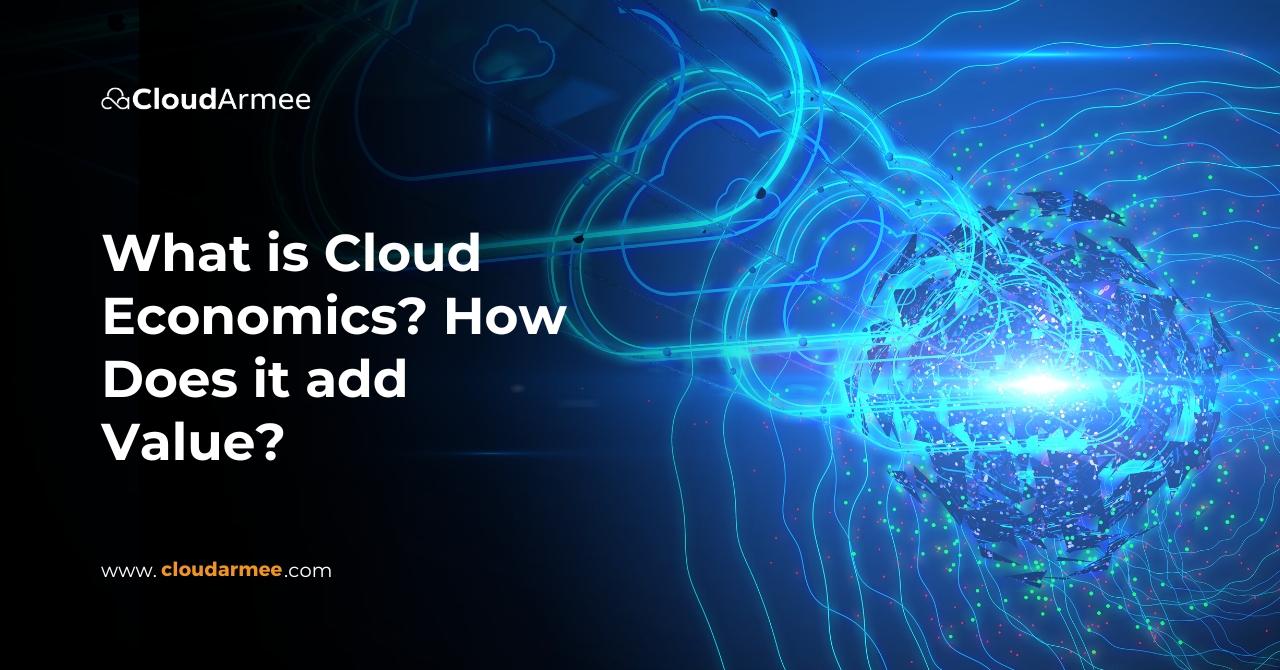
Today, every organization is aware of cloud readiness assessments and why they are crucial for successful cloud migration. Similar to a cloud readiness assessment, organizations must explore and comprehend the concept of cloud economics before moving their operations to the cloud.
One of the main motives for businesses moving to the cloud is cost optimization. The operational costs were significantly reduced by the pay-as-you-go model. The adoption of the cloud must be part of a long-term, strategic plan that measures the cloud’s overall value by looking at the organization’s short- and long-term objectives while keeping particular technological solutions in mind.
Cloud economics is the study of the costs and benefits of cloud computing and the economic principles that underpin them. As a discipline, it explores issues that matter to the enterprise. What is the return on investment (ROI) of migrating to the cloud or switching current cloud providers, and what is the total cost of ownership (TCO) of cloud solutions versus traditional on-premises solutions? Understanding the economics of your investment will help you optimize your investment and get the most value for your organization.
Cloud computing provides organizations with numerous benefits. These include additional resource security, scalable infrastructure, flexibility, and more. However, these benefits come at a price. The cloud economy determines the cost-benefit ratio of an organization when creating resources in the cloud. You pay for storage, backup, networking, load balancing, security, and more in the cloud. In addition, you need IT capabilities for the right cloud architecture. By analyzing these aspects, CIOs can learn whether an organization can take advantage of cloud computing. Since the economics of cloud computing helps companies determine if cloud computing is right for them, it’s important to take action before moving on to the migration aspects.
Cloud economics examines financial elements like costs and returns. The following are some crucial aspects of cloud economics:
The total cost of ownership (TCO) is a calculated estimate of the total cost you’ll incur when you decide to adopt a cloud-based model for your business. This includes the costs of data centers, maintenance and support, development, business continuity and disaster recovery, and more. TCO compares the cost of on-premise infrastructure to the cost of using a cloud service. The main goal is to help you choose the best course of action for your business, based on the costs and benefits involved.
Cloud computing is more adaptable than conventional IT systems. You need to acquire and maintain extra computing power when predicting demand. Adding extra computing power drives up costs for businesses significantly, with some capacity going unused. Cloud computing only charges you for what you actually use. Pay-as-you-go platforms like AWS and Azure let you only pay for the resources and services you actually use. By being elastic, you can scale up or down cost-effectively and with the appropriate number of resources.
Cloud computing is a different way of doing computing where the price you pay is based on how much you use the service. With traditional computing, the price you pay is based on the amount of capital (CAPEX) you spend. With cloud computing, the price you pay is based on the amount of operating (OPEX) expenses you have. This means that the cost of using the service is not fixed, and can change depending on your usage. With a pay-as-you-go model, you don’t have to pay an upfront cost. However, this can also be a risk if you don’t manage your resources carefully.
When considering a cloud migration, on-demand pricing is an important factor to consider. With on-premise computing, you purchase a fixed capacity that you own. When you transfer to the cloud, the fixed capacity prices may alter, and the pricing may become elastic, which can quickly spiral out of control if you don’t frequently monitor or regulate it. Cost swings caused by the price-as-you-go strategy might cost you a lot of money. As a result, you will want a cost management solution to assist you in detecting any irregularities.
The cloud economy includes two main principles: economies of scale and global reach. Through economies of scale, cloud service providers save organizations money because they buy computing resources in large quantities at a lower cost. When companies use these shared resources, they avoid the significant upfront costs of acquiring their own costly infrastructure. And in a pay-as-you-go pricing model, companies pay only for the resources they actively use, increasing or decreasing them as needed. The global reach of cloud computing also provides significant savings. When servers no longer need to be placed on premises—they can be located and accessed from anywhere in the world—companies can significantly reduce labor costs. Their IT teams no longer need to spend time deploying and maintaining complex hardware on-site.
By deploying a single infrastructure and operations across IT environments, IT teams can achieve additional cost savings and reduce the complexity and silos of IT systems. In addition to the enormous efficiency and cost savings of cloud computing, there is another economic benefit: business agility. Companies using cloud computing resources can deploy applications faster and scale up storage and compute capacity as needed. This IT agility allows businesses to respond faster to market changes and customer demands, resulting in faster revenue growth.
The topic of cloud economics includes all monetary facets of the cloud. CloudArmee can undoubtedly be your one-stop shop for all your questions and concerns if you want to get thorough insights into your cloud spending or are looking for suggestions to lower cloud costs.